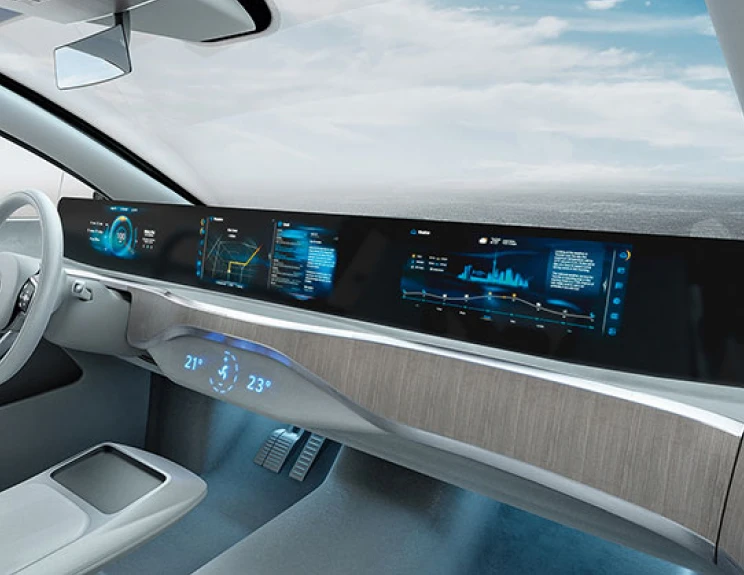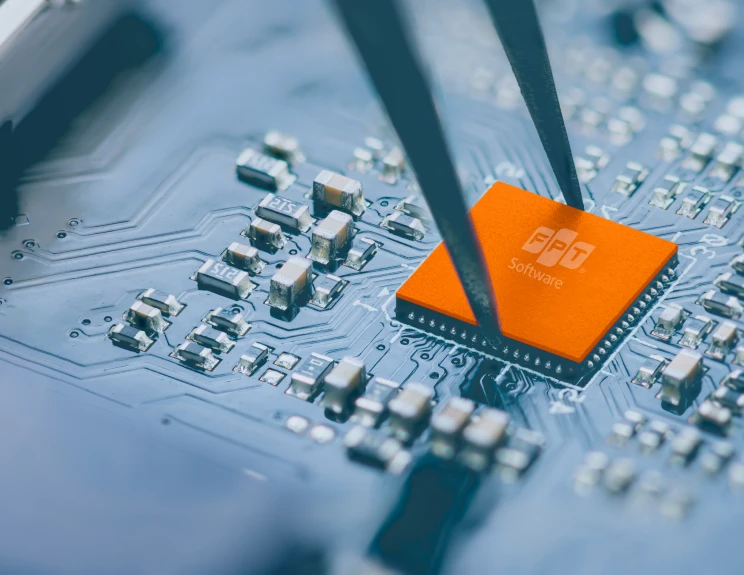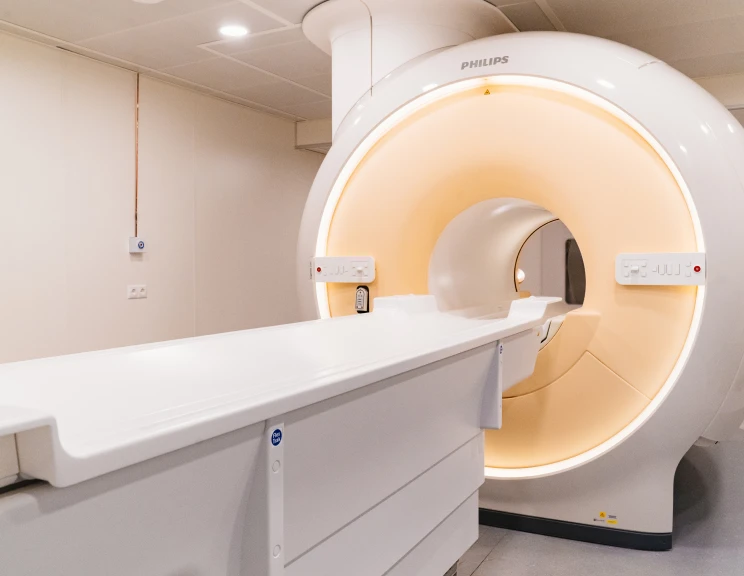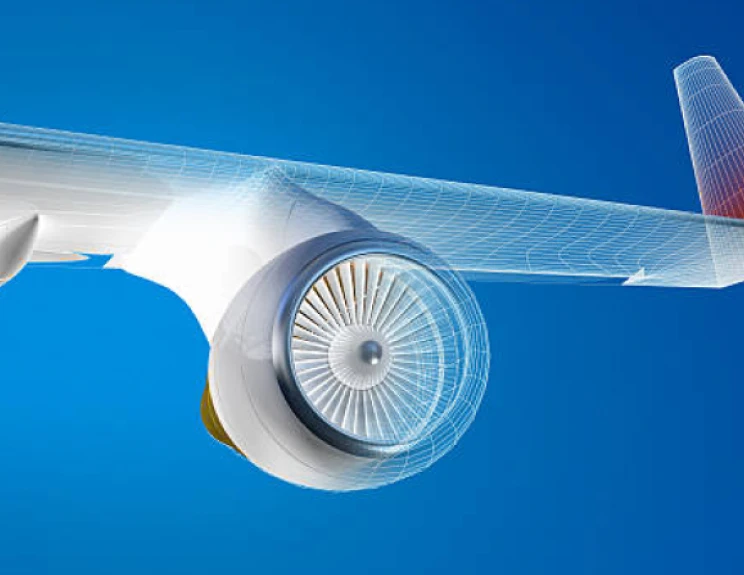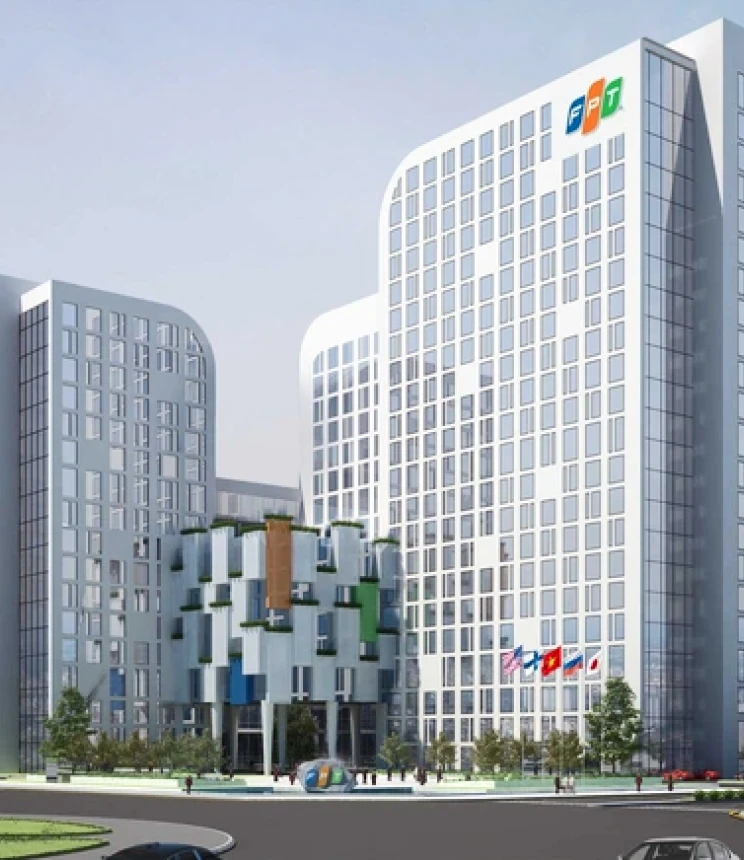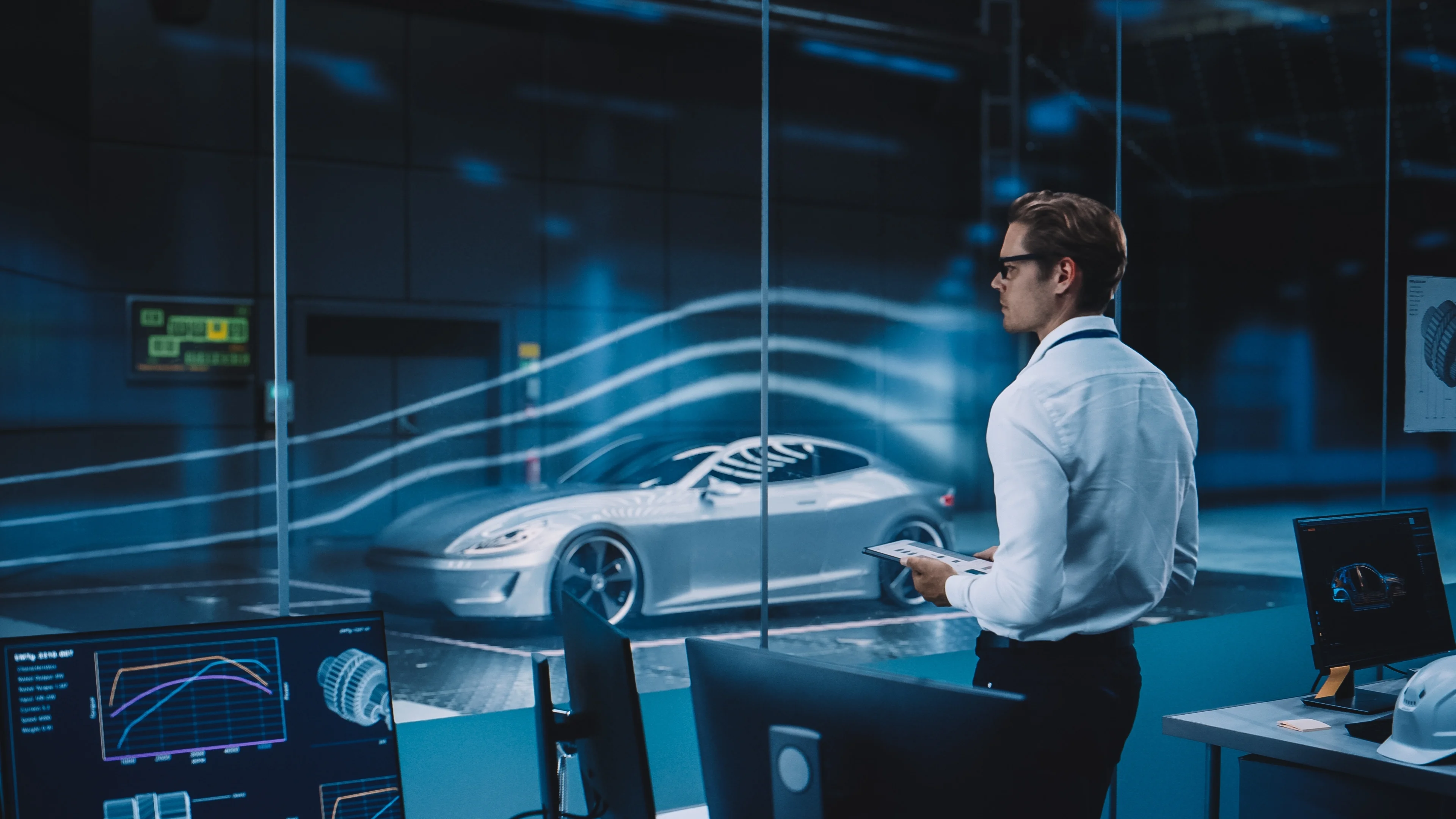
As vehicles become more connected, automated, and electrified, centralized E/E architecture is essential for enabling seamless communication between sensors and electronic control units (ECUs). Electrical/Electronic (E/E) architecture is the integrated framework that connects and manages all electrical and electronic systems within a vehicle, which enables communication, functionality, and control across various components. With the global automotive software and electronics market expected to reach 469 billion USD by 2030, E/E architecture can open up various opportunities for OEMs.
The major shift from traditional to advanced E/E Architecture
Previously, vehicles were designed with a large number of individual Electronic Control Units (ECUs) dedicated to specific functions. Each ECU operates independently, such as engine performance, braking, lighting, and infotainment. While this decentralized approach allows for specialization, it also leads to a complex and inefficient system. This means each ECU requires its own hardware, wiring, and software, and contributes to higher manufacturing costs.
In contrast, the modern approach to E/E architecture is moving toward centralization, where fewer, more powerful ECUs manage multiple vehicle functions. Centralized architecture combines different operations into one or a few high-performance computing platforms capable of managing diverse tasks simultaneously. This consolidation reduces complexity, production costs, and increases vehicle flexibility. Specifically, as vehicles become more feature-rich, the cost of automotive electronics is expected to reach 50% of total car cost by 2030.
Key Trends that Drive the Evolution of E/E Architecture
Electrification
The global shift toward electric vehicles (EVs) has necessitated the development of more efficient and high-performance computing systems. EVs require advanced battery management, regenerative braking systems, and real-time monitoring to optimize energy efficiency and safety. Thus, centralized architecture can improve these capabilities by reducing system redundancies and enabling faster data processing. As EV sales reach almost 65 million vehicles in 2035, centralized systems will become even more critical for automakers to stay competitive.
Autonomy
The rise of autonomous vehicles (AVs) is driving the evolution of E/E architecture to meet new computational demands. Level 4 and 5 autonomous systems require over 1,000 TOPS (Tera Operations Per Second) to process massive amounts of data from sensors, cameras, and LiDAR systems in real time. This has necessitated the adoption of centralized computing platforms, which are more capable of handling these data volumes and the complex decision-making processes critical for autonomy. By enabling such high-performance computation, E/E architecture is becoming more essential for the advanced functionality required by autonomous systems.
In addition, customer expectations for autonomous vehicle capabilities are reshaping the priorities for E/E architecture development. Research indicates that 64% of consumers are willing to switch to OEMs offering superior autonomous driving experiences, signaling a growing demand for innovation in this space.
Connectivity
Connectivity is reshaping E/E architecture, as modern vehicles increasingly rely on IoT, V2V, and V2I technologies to enable advanced functionalities. As connected vehicles generate up to 4TB of data daily, they require robust, centralized E/E architecture capable of processing this information in real time. Centralized systems not only enhance data handling but also ensure seamless communication between onboard systems, external infrastructure, and other vehicles, which is critical for features such as OTA updates, predictive maintenance, and enhanced safety. As 95% of new vehicles are expected to be connected by 2030, E/E architecture must evolve to support scalable, high-bandwidth, and secure connectivity solutions.
Impacts of the E/E Architecture Shift on OEMs
Simplified vehicle design and manufacturing
The adoption of centralized architecture significantly streamlines vehicle design by reducing the number of Electronic Control Units (ECUs) and simplifying wiring harnesses. This reduction minimizes potential failure points and maintenance efforts. With fewer components, OEMs can focus on developing optimized, integrated solutions that improve overall vehicle efficiency.
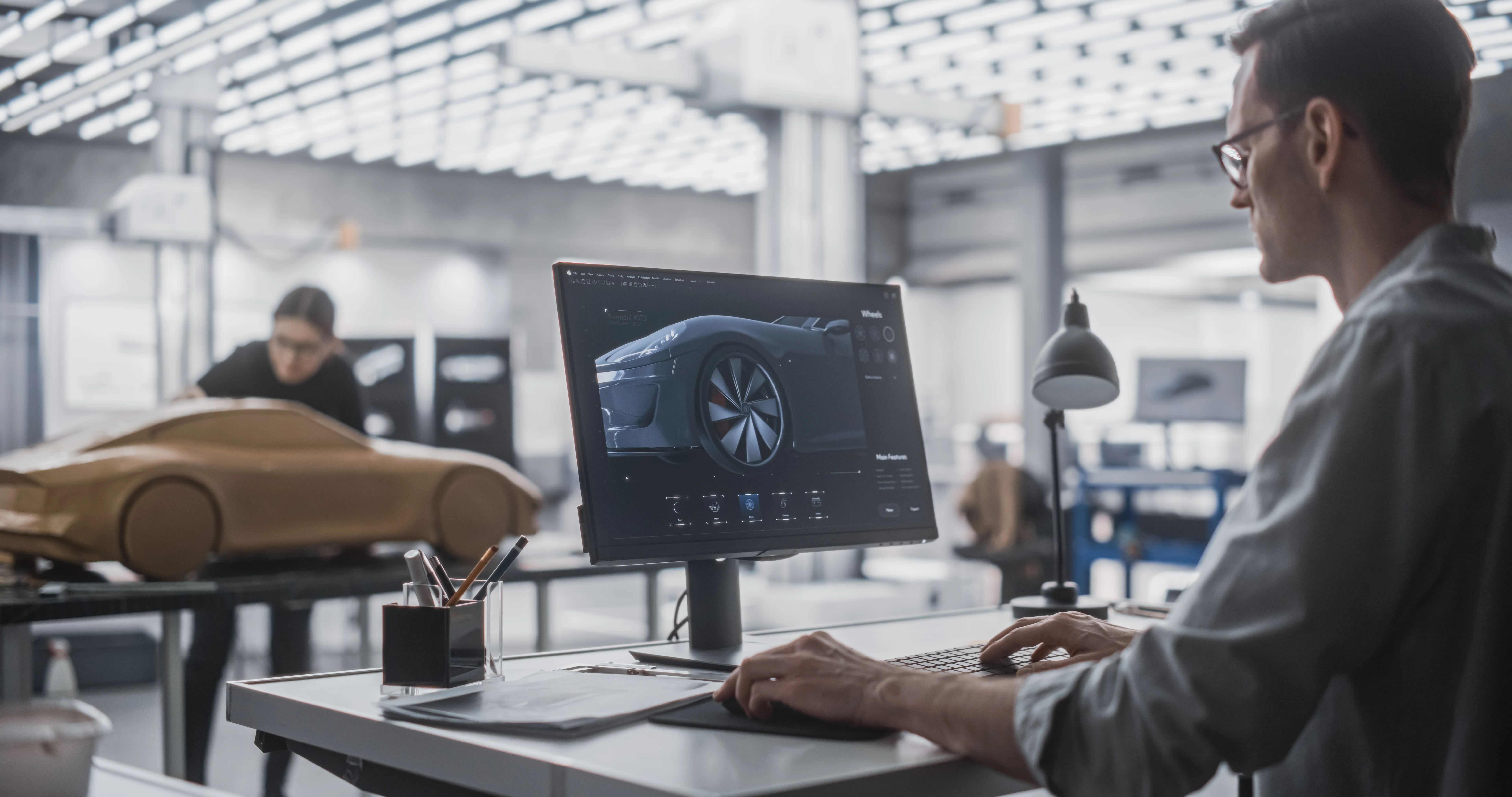
Cost saving
By consolidating multiple ECUs into a unified platform, OEMs can achieve significant cost savings across manufacturing, assembly, and parts sourcing. For instance, centralized platforms facilitate OTA updates, enabling automakers to deliver software improvements and new features without requiring hardware changes. This capability can save automakers up to 35 billion USD annually in recall-related expenses, while enhancing customer satisfaction through seamless upgrades.
Discover how the shift to zonal and central computer architecture in car E/E systems presents opportunities and challenges across the automotive value chain: Gear Up for Next-Gen E/E Architecture with Zonal Compute: The Automotive Industry’s Game Changer.
Increased focus on software and IT capabilities
As E/E architecture becomes increasingly software-centric, OEMs will invest heavily in software engineering and IT infrastructure. Reliable and robust software is essential to manage critical functions such as vehicle control, safety, and diagnostics. For many traditional automakers, this shift represents a significant cultural and operational change, as software development has historically been outside their core competencies. OEMs must take greater control over the software stack, including middleware, operating systems, and communication protocols. This requires cross-functional collaboration, agile development methodologies, and strategic partnerships with technology providers.
Enhanced user experience
Centralized architecture enables OEMs to enhance user experience. By consolidating control functions, centralized platforms create more intuitive and responsive systems for features like infotainment and advanced driver-assistance systems (ADAS). In addition, centralized E/E systems enable highly personalized driving experiences. Drivers can customize settings such as seat position, climate control, and infotainment preferences, delivering tailored comfort and convenience. The enhanced computational power of these platforms facilitates the development of sophisticated, visually appealing user interfaces that are easy to navigate.
Accelerate in the future of software-defined vehicles with FPT
The shift to centralized, software-defined E/E architecture in vehicles opens up numerous opportunities for manufacturers to enhance their product offerings and tap into new revenue streams. More importantly, as vehicles become more reliant on software and cloud-based services, OEMs are increasingly partnering with tech companies, including software vendors, cloud providers, and telecommunications companies. By working with these technology leaders, OEMs can stay at the cutting edge of digital innovation and enhance their vehicles’ capabilities in areas like autonomous driving, cybersecurity, and infotainment.
FPT offers a comprehensive suite of engineering services encompassing in-vehicle infotainment, E/E architecture design consultancy, Electronic Control Units (ECU), security, automotive UI/UX design, wireless connectivity, and digital engineering. With more than 10 years of experience in the automotive industry, a vast talent pool, and the latest technologies, FPT aspires to accelerate the rapid development of automotive - a sector now determined by software.
Find out more about our service offerings here: https://fptsoftware.com/industries/automotive.




